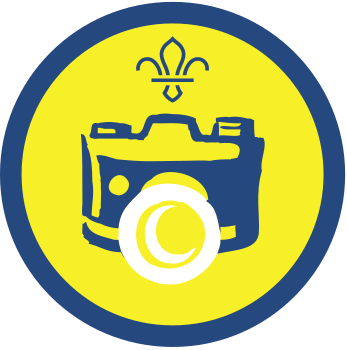Every picture tells a story
You’ll need
- Camera or phone
- Device for showing or printing photographs
Before you begin
- Use the safety checklist to help you plan and risk assess your activity. Additional help to carry out your risk assessment, including examples.
- Make sure all young people and adults involved in the activity know how to take part safely.
- Make sure you’ll have enough adult helpers. You may need some parents and carers to help if you’re short on helpers.
Take photos during a meeting
- Gather everyone together and ask everyone to get into pairs or small groups. Each group needs access to camera, such as one on a smartphone, so adapt the group sizes depending on how many devices you have.
- Each group should think about the theme of ‘our community’, and talk about objects or scenes that represent community for them. They should talk about how they could take photographs of their ideas.
- It could include favourite activities, community events, places that people gather, or traditions—or you could go for a walk around your local area, picking out places you like to eat, play, or spend time with friends and family.
- Everyone should take at least 10 photographs related to the theme. They may want to use the ‘How to take great photos’ sheet to remind themselves how to get the perfect shot, but it’s OK to explore and experiment as well.
- Make sure to have the photos ready to share in the next session. They may want to show them on a phone or tablet, or they could print them out.
Take photos at home with a parent or carer
- Everyone should think about the theme of ‘our community’ and talk to a parent, carer, or friend about objects or a scene that represents it—and how this could be photographed. Ideas could include somewhere friends and family gather together, certificates or awards related to the community, or objects that represent where you live.
- Everyone should take at least 10 photographs related to the theme. They may want to use the ‘How to take great photos’ sheet to remind themselves how to get the perfect shot, but it’s OK to explore and experiment as well.
- You don’t need a camera for this—a phone will work just as well.
- Everyone should show their photos to a parent or carer and explain why they chose those shots and what they like about them.
- If they’re able to and allowed to, everyone should share their photos with their leaders, or print them out, so they can be shared them with their friends at a meeting. Make sure to have parent or carer permission before doing this, and explain how and where the photos will be used.
Only give parents and carers the details to send the photos in directly, rather than asking young people themselves to do this. Take a look at our guidance on digital safeguarding. Remember to check photos before sharing them to make sure they’re safe and appropriate to sure, such as checking what may be seen in the background or no personal details, such as a home address, can be seen.
Share the photos and enjoy them together
- Everyone should share their photos. You may want to split into smaller groups, to make this easier.
- People who are happy to can explain why they chose to take each picture, what they like about it, and one thing they’ve learned about photography.
- If there’s time, everyone else should share what they like about each other’s photos.
Reflection
This activity helped you to develop the skill of photography. What was the one thing you said you learned? Can you remember what other people learned, and did you learn that too? The person leading the activity may help you remember technical skills such as staying still, keeping the light behind you, and choosing when to zoom. Don’t forget, the best way to keep building on this skill is to keep practising.
This activity was also a chance to communicate. Photos are a way to communicate—you’ve used a picture to share a feeling or concept with other people! Do you think it’s powerful to use a photograph as well as (or instead of) words? How did you share why you chose to take each picture and what you liked about them? Was it easy or difficult to explain? Did you understand other people’s answers?
Safety
All activities must be safely managed. You must complete a thorough risk assessment and take appropriate steps to reduce risk. Use the safety checklist to help you plan and risk assess your activity. Always get approval for the activity, and have suitable supervision and an InTouch process.
- Phones and cameras
Make sure parents and carers are aware and have given consent for photography.
You can give some examples of scenes, objects, and photographs that represent the theme of ‘our community’.
Anyone who has a visual impairment can describe what they’d like to frame with their viewfinder (or photograph with the camera). Someone should help them frame or photograph, describe what they can see, and ask questions (for example: ‘at the moment the photo doesn’t show the person’s feet—should they be in the picture?’)
All Scout activities should be inclusive and accessible.
The theme of the photos is up to you. You could take 10 photos while on the exploration for your Explore Activity Badge, use them to tell others how to stay safe as part of the Safety Activity Badge, or use them to tell others about your visit to a place of worship as part of your Faith Activity Badge.
